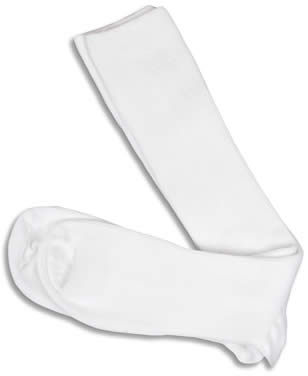When applying anti-embolism stockings, there is a prescribed method of properly dressing them to your patient. It is an important fact to note that you are putting these stockings on people who have other physical concerns such as a more restricted range of movements, a disability, or pain which they may feel if ever you place the stocking on wrong. You therefore have to make sure that you are putting them on in the best way possible where you would not be injuring or damaging the patient. Anti-embolism stockings are an important part of your work as a CNA.
Just like with other procedures, you will have to greet the patient appropriately when you enter their room and you have to introduce yourself also. This is to minimize any tension that the patient may feel over your appearance and also fear which may arise especially if they do not know you yet. Explain to the patient why you are there and what particular steps will you take in order to carry out the procedure. It will be best to describe the procedure first and then talk to the patient about it while you are performing it.
 Next, you should first ask your patient or determine for yourself whether they have any allergic reaction to things that contain latex. This is an important factor since the patient will be wearing the stocking for an extended period of time and any allergic reaction to latex will significantly increase their discomfort. If they do not have any then proceed to the application of the stockings. Take note of the size of the stockings and the legs of the patient. Are they compatible with each other or is it too large or small for the patient? Afterwards, put the patient in a supine position and then proceed to dry the legs of the patient with talcum powder to give them a comfortable time wearing the stockings.
Next, you should first ask your patient or determine for yourself whether they have any allergic reaction to things that contain latex. This is an important factor since the patient will be wearing the stocking for an extended period of time and any allergic reaction to latex will significantly increase their discomfort. If they do not have any then proceed to the application of the stockings. Take note of the size of the stockings and the legs of the patient. Are they compatible with each other or is it too large or small for the patient? Afterwards, put the patient in a supine position and then proceed to dry the legs of the patient with talcum powder to give them a comfortable time wearing the stockings.
After this, gather the stockings into your hand and then slowly roll them upwards until it reaches the level above the knee. Place the heels and the toes of the stockings in the correct position and remove any wrinkle which may be found in the stockings. Make sure that you try to do this in the most comfortable method as possible and avoid pinching the skin of the patient. Afterwards, ask the patient if he would like to be in another position.
When you have finished applying the stockings, remove your gloves and proceed to wash your hands as recommended. Applying anti-embolism stockings is an important part of CNA work as it helps to reduce instances of blood pooling and other similar incidents which may affect the overall well being of the patient. Make sure that you have given them sufficient privacy and rights to independence during the administration of the procedure and that you have taken their requests and needs into consideration. Taking note of all these factors is an important part not only of your CNA exam but in your future job as well.
Watch the video on how to put TED hose on a patient:
https://www.youtube.com/watch?v=W2LqyAh5GEw